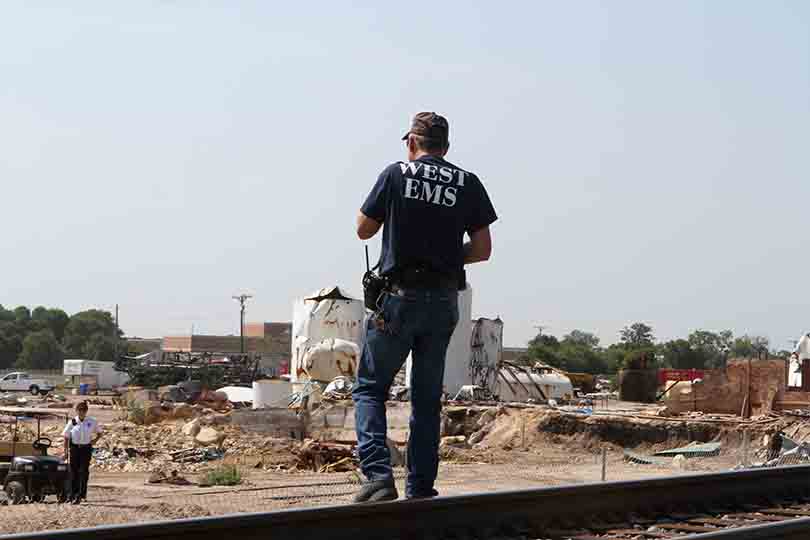The Occupational Safety and Health Administration (OSHA) and the Environmental Protection Agency (EPA) need to tighten their standards for ammonium nitrate, the Chemical Safety Board (CSB) said in its report on the 2013 explosion of a fertilizer plant in West, which obliterated the facility, killed 15 people and caused widespread damage to more than 150 buildings nearby.
CSB released its report ahead of a public meeting in Waco on Friday to discuss its findings, according to Agri-Pulse. The April 17, 2013, fire at the West Fertilizer Company (WFC) plant detonated between 40 and 60 tons of fertilizer grade ammonium nitrate (FGAN), “not counting additional FGAN not yet offloaded from a railcar,” CSB said. Twelve emergency responders and three members of the public were killed.
“OSHA efforts to oversee facilities that store and handle FGAN fell short at the time of the incident,” CSB said.
OSHA’s Explosives and Blasting Agents standard “was not very well known among those in the fertilizer industry, likely due in part to the fact that application of the section was unclear and (it) had rarely been used previously to cite fertilizer facilities,” the report said.
OSHA also left ammonium nitrate off the list of highly hazardous chemicals whose handling triggers the Process Safety Management (PSM) standard, “even though AN possesses reactive characteristics that would have triggered its inclusion,” CSB said.
The Agricultural Retailers Association (ARA) released a statement saying it was pleased the CSB report recommended that OSHA either implement Process Safety Management on FGAN or update its storage and handling standards.
“ARA has ardently advocated for the latter,” the group said. “Applying PSM to retail facilities is inappropriate, inefficient and unnecessarily burdensome.”
Language in a congressional report has resulted in OSHA delaying enforcement of PSM for most agricultural retailers who handle anhydrous ammonia until October, but ARA and The Fertilizer Institute are continuing to seek relief from the requirements, or, at the least, a notice-and-comment rulemaking.
“The CSB report points out that West Fertilizer was not a manufacturing facility and that the anhydrous ammonia tanks did not suffer a catastrophic failure; to the contrary, they performed as intended and were able to withstand the blast,” ARA said. “Applying PSM—a regulation designed for manufacturing—to retail fertilizer facilities will cost the industry upwards of $100 million and will not enhance workplace or community safety.”
CSB said the WFC facility was covered under EPA’s Risk Management Program (RMP) rule for its anhydrous ammonia tanks, but not for its FGAN.
“WFC employees and emergency responders demonstrated a greater awareness of the hazards associated with onsite storage of anhydrous ammonia than those associated with FGAN,” the report said.
“If EPA had included FGAN under the Risk Management Program rule, the WFC would have been required to apply it for its storage of FGAN and perhaps could have reduced the risk of catastrophic accidents like the one that occurred at the WFC,” CSB said.
ARA said it opposes subjecting FGAN to Risk Management Program requirements: “RMP is a Clean Air Act program to manage and mitigate airborne releases of hazardous chemicals. Because it is a pressurized liquid, it is appropriate to regulate anhydrous ammonia under RMP and agricultural retailers are already under the CAA. On the other hand, FGAN is a dry product and it should not be regulated under RMP.”
The report detailed a wide swath of destruction.
“More than half of the structures damaged during the explosion were demolished to make way for reconstruction,” the report said. “The demolished buildings include an intermediate school (552 feet southwest of the facility), a high school (1,263 feet southeast), a two-story apartment complex with 22 units (450 feet west) where two members of the public were fatally injured, and a 145-bed nursing home (500 feet west) where many of the seriously injured civilians resided. A middle school (2,000 feet southwest) also sustained serious but reparable damage.”

